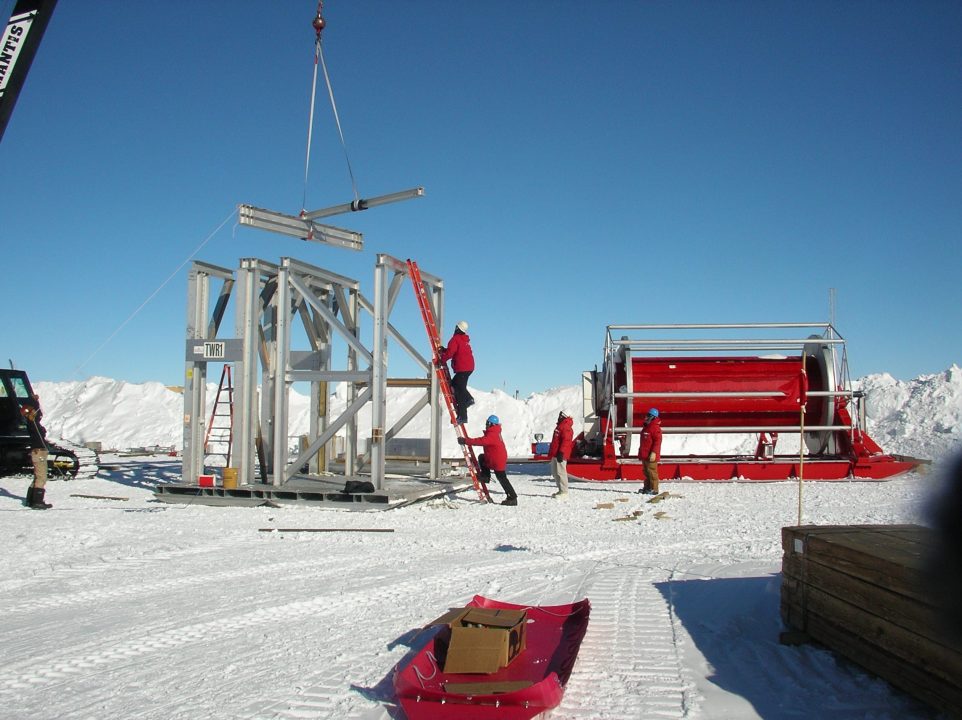IceCube Masterclass for High School & Early Undergrad StudentsImage credit: IceCube/NSF

IceCube Masterclass at Queen’s University:
When: Saturday, April 12th, 2025: 10am – 4pm, lunch provided.
Where: Stirling Hall, Queen’s University
Who: For high school students and early undergrads.
Image Credit: Jeff Cherwinka, IceCube/NSF
How to apply
We have a fixed number of spots for students to attend the IceCube Masterclass hosted (in person and online) at Queen’s University/McDonald Institute on Saturday, April 12th, 2025. To apply to attend, email outreach@mcdonaldinstitute.ca with the following information:
- Attach a letter of interest (1-page maximum) stating your school name, location, and grade, and explaining why you would like to attend and what you hope to learn.
We hope to accept everyone that applies, but we only have a set capacity. Note, we may also be able to have some students attend remotely by offering the program in a hybrid format. Please indicate which format you would prefer in your application.
The session will run from 10am – 4pm, and lunch will be provided to those in person.
Deadline to apply for full consideration is April 2nd, 2025, after which we will continue to accept applications until all places are filled.
About IceCube
IceCube is a high-energy neutrino telescope located under the South Pole. IceCube is the largest neutrino telescope in the world and the only telescope capable of detecting high-energy neutrinos from outside the solar system.
The IceCube Masterclass is here for young students to learn more about our Universe, meet IceCube researchers, and exchange ideas with their peers. This year, the 10th edition of the IceCube Masterclass program will be held at twenty-five institutions in Canada, US, Europe, and Asia. This also marks the first IceCube Masterclass program at Queen’s University at Kingston. We are excited to invite our young students—our future scientists—to learn about particle astrophysics by doing real research.
You can participate in an IceCube masterclass if you are a high school student interested in science, and you live near one of the hosting IceCube research centers:
- Queen’s University / McDonald Institute, Kingston, ON, Canada
- Deutsches Elektronen-Synchrotron (DESY), Germany
- Erlangen Centre for Astroparticle Physics, Germany
- Harvard University, US
- ICEHAP, Chiba University, Japan
- Michigan State University, US
- Mercer University / Georgia Tech, US
- Niels Bohr Institute, Denmark
- The Ohio State University, US
- The Ohio State University at Newark, US
- Osaka Metropolitan University, Japan
- RWTH Aachen University, Germany
- South Dakota School of Mines and Technology, US
- TU Dortmund, Germany
- University of Delaware, US
- UCLouvain, France
- Université Libre de Bruxelles (ULB) / Vrije Universiteit Brussel (VUB), Belgium
- University of Mainz, Germany
- University of Rochester, US
- University of Wisconsin–River Falls, US
- Uppsala University / Stockholm University, Sweden
- WIPAC at University of Wisconsin–Madison, US
You can get more information from the IceCube MasterClass web page (masterclass.icecube.wisc.edu
There are also many beautiful pictures related to IceCube research (icecube.wisc.edu/gallery).
Fun Facts
Q. What are neutrinos?
A. Neutrinos are one of the “fundamental particles,” – meaning that it isn’t made of any smaller pieces. Neutrinos have very small mass and do not like interacting with other materials. IceCube observatory is built to measure neutrinos that have billion times higher energies than visible light. These “high-energy neutrinos” are believed to be generated outside the solar system. Because the neutrinos do not like to interact, we need to build a very large detector, such as IceCube, to study these particles.
Q. Where is IceCube located?
A. IceCube is located at the South Pole, Antarctica. It comprises a surface detector called “IceTop” and a 3-dimensional detector array underneath. This underground, in-ice detector is located 1.45 km below the surface.
Q. How did you build such a detector?
A. We drilled holes in the ice using a water jet and put the detector array string by string. Within a day or so, the water refreezes, embedding the detector array in the ice.
Q. Why Antarctica?
A. Neutrino telescope studies the light emitted by particle interactions. Antarctic ice is a very nice medium for such observations as it is clean and transparent. The South Pole has a large volume of solid, thick ice that does not move very quickly. The South Pole also has the infrastructure to support scientific research.
